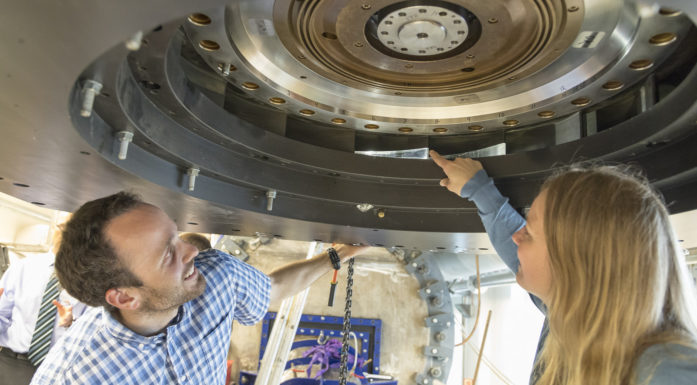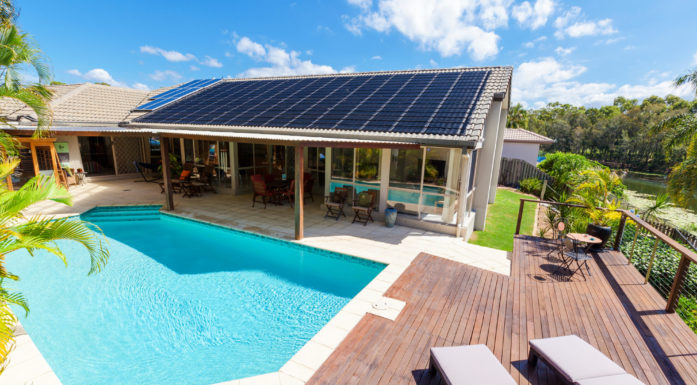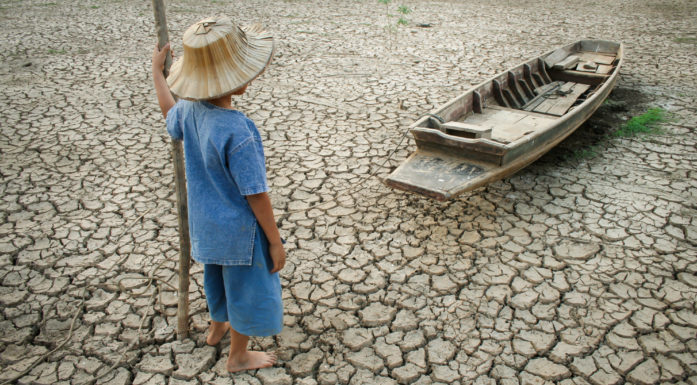Trapping the sun’s energy—in a box
Planning on cooking something at your hut? Today, you still need a gas stove to do so. But soon, stoves and ovens containing rechargeable heat batteries may be readily available for any cabin or home.
ENERGY: The solar cells on the roof of your cabin may provide enough power for some light and warmth, but if you want enough heat to cook food, you have to resort to wood or gas. One NTNU professor is working on a box containing a rechargeable oven driven by a heat battery that will hopefully be available for cabins and homes soon.
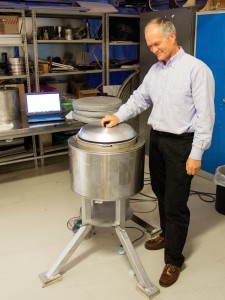
The plate is warm enough for cooking right when you want to use it, charged using surplus electricity from solar cells. Photo: Maren Agdestein/NTNU
“Off-grid” energy systems, systems that aren’t connected to the national power grid, such as an isolated hut with solar cells on the roof, require good methods of storing energy. Electricity can be stored in batteries, and solar energy is often stored as hot water. What is usually lacking is heat batteries with enough capacity and the ability to hold temperatures high enough for cooking– about 200 degrees.
“A heat sink like this should be a part of any solar energy system available for personal use,” says Professor Ole Jørgen Nydal at NTNU’s Department of Energy and Process Engineering.
In the solar lab at the thermal engineering facilities at NTNU, Nydal is working on a boiler that stores excess power as heat at about 200 degrees. This boiler can be used to cook food both as an oven and a stovetop, or to provide heat for a building. A cabin, for example.
- You might also like: They bake using sunshine
Cutting edge solar heat research
Have you ever held a piece of paper under a magnifying glass in the sun? It doesn’t take long for the paper to go up in flames. High temperature heat sources like this are used in so called solar concentrators. What is a solar concentrator? Imagine a parabolic construction of mirrors that concentrates solar rays to a point.
Nydal explains that collecting high temperature thermal energy from solar concentrators is much more effective than using solar cells or heating elements. Solar heat research has therefore been focused on integrating heat storage systems with solar concentrators. But not in this project.
The goal of his current project is to find a good method of storing excess electric charge in a heat sink. Working with a home solar cell installation (or small-scale wind/water power), the idea is to collect excess electrical energy and convert it to high temperature thermal energy. When the electric battery connected to a solar cell is full, additional energy that is produced is directed to latent heat storage to provide energy for cooking and heating after the sun goes down.
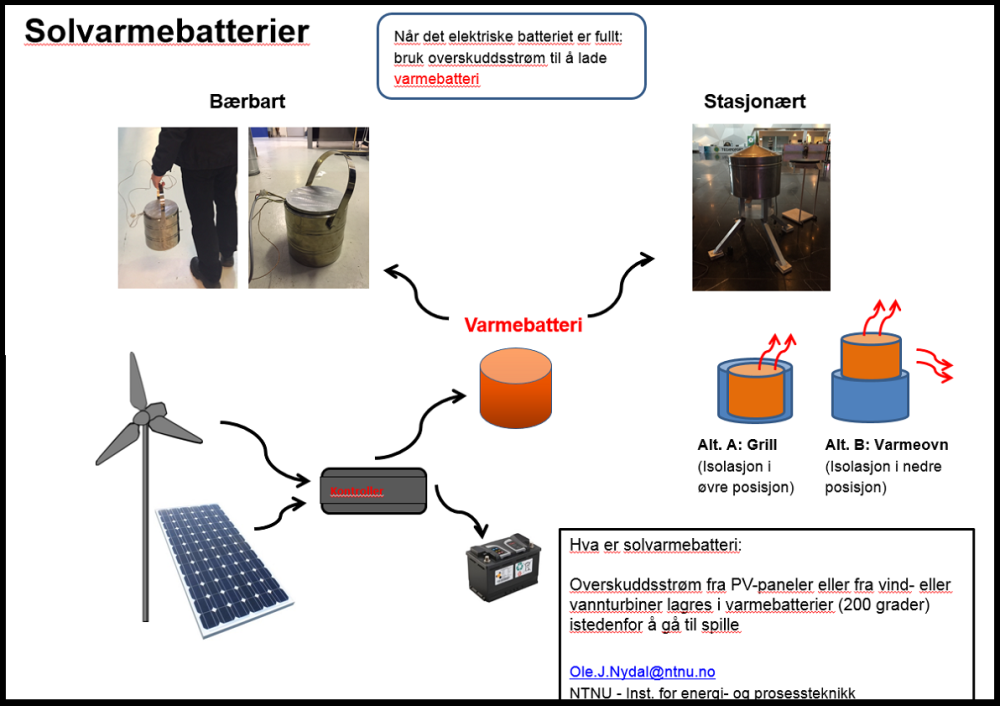
This illustration shows how a solar heat battery works. Click on the picture for a larger version. Illustration: NTNU
Salt as heat storage

“At this point, keeping a high enough temperature for long enough is really only a question of good enough insulation,” he says, explaining the status of the project. Photo: Maren Agdestein/NTNU
Nydal explains that the inside of his heat battery is a nitrate salt that melts at 220 degrees. This same salt is often used for heat storage and transport at large-scale solar power plants. Heat from heating elements is stored by the salt melting, and is released by it cooling and returning to solid state.
“At this point, keeping a high enough temperature for long enough is really only a question of good enough insulation,” he says, explaining the status of the project.
The stovetop he used as the basis for the project is a normal griddle plate found commercially in the US, marketed as a Norwegian griddle for making ‘lefser’– a type of soft Norwegian flatbread. In his lab at NTNU, Nydal built a stationary heat battery around this griddle, as well as a portable one, to show that his technology can be scaled up.
- You might also like: Household consumption is the big environmental evil
African collaboration
Professor Nydal’s research on solar heating has been in collaboration with 4 African universities.
African collaborators
- Ethiopia Institute of Technology-Mekelle, Ethiopia
- University of Dar Es Salaam, Tanzania
- Makerere University, Uganda,
- Eduardo Mondlane University, Mozambique
Several PhD candidates from Africa have visited the lab at NTNU, and Norwegian students have had the opportunity to visit the African universities. The researchers have investigated several methods of capturing and storing heat for cooking, but the ongoing project is focused on oil-based systems as well as systems that include electric heating from excess energy production.

Nydal’s goal is to study different methods for using electricity to charge a heat storage battery. Photo: Maren Agdestein/NTNU
One of the incentives for collaborating with the African universities is to create a solar concentrator connected to a heat sink that can be used to cook traditional Ethiopian injera flatbread. This bread is the primary food source for 90 million people in Ethiopia, and is traditionally cooked in wood-fired ovens. However, the smoke from the wood fire can be a health hazard, and the method itself has led to deforestation. It can also be both expensive and time-consuming for families.
“One of our PhD candidates tested a solution for cooking injera on a system where a solar concentrator heats the griddle directly. This experiment will be copied in Ethiopia,” Nydal explains. “Then we’ll see if our systems will actually be taken into use by families in African countries. It isn’t a given that you choose a better technological solution just because it exists. There may be cultural and social hurdles to get over.”
To Tanzania and back
Nydal wants to continue this project during his sabbatical in 2016. This spring, NTNU was visited by seven researchers from the collaborating universities in Ethiopia, Tanzania, Uganda and Mozambique. Two masters students from NTNU had research stays in Ethiopia. The goal was to create a good collaboration, so that the systems they’ve been working on can be developed and presented at the universities, and made available to users on both ends.
The heat battery system is going to be tested at a hospital in Tanzania that is slated to have solar cells installed on its roof. Grid power in that area is often rationed and unreliable, Nydalen explains.
“When our heat battery has been tested in Africa, we can bring it back and turn it into something that Norwegian hut owners may be interested in,” he said. “In the future, we expect that any exposed surface could be used to collect energy. So it makes sense to try to collect excess electrical energy and store it as high temperature thermal energy for our homes, too.”

